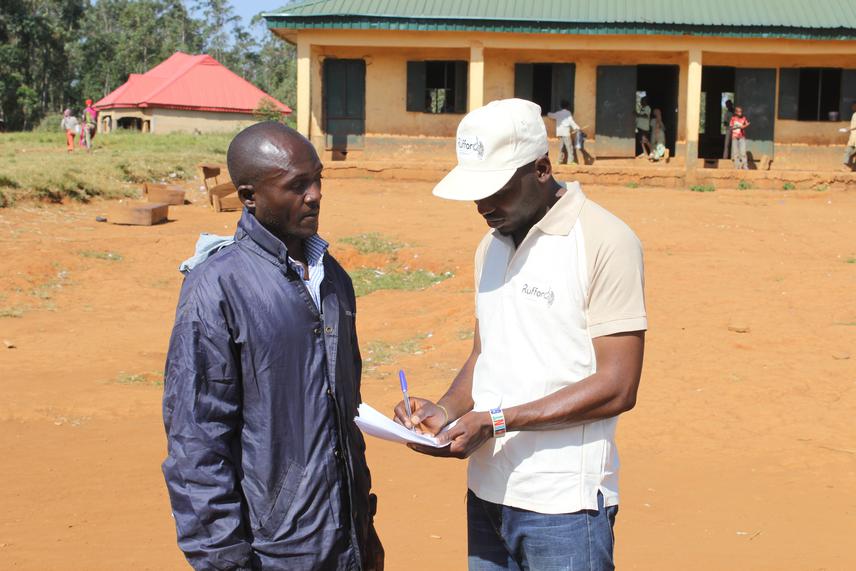Yadok Biplang Godwill
This study aims to investigate the population, density, preferred habitat and home range of Cricetomys as well as their preferred seed species and the fate of the seeds the disperse.

Biplang Yadok administering a questionnaire to a resident of Yelwa Village, Taraba State, Nigeria.
Large seeded species in African forests are facing a seed dispersal crisis following the decimation of their large bodied seed dispersers from hunting and forest fragmentation. However it is possible that scatterhoarding rodents may inadvertently act as substitute dispersers. To test this, we will determine the dispersal effectiveness of the African Pouched Rat (Cricetomys sp.) in a Nigerian montane forest.
Firstly, this study seeks to understand the population ecology of Cricetomys, to achieve this, we will use a Spatially Explicit Capture Recapture analysis method in addition to a capture-mark-recapture technique. We will use 64 single catch cage traps (to be placed in an 8 x 8m grid (Wilson et al., 2007) and spaced 40m apart because the rats are large (~1.4Kg). The traps will be baited with sweet potatoes (Ipomea batatas) and left in place for five days at each trapping site. The traps will be checked every morning between 6:00 hours to 7:00 hours and each trapped rat will be marked with a uniquely numbered ear-tag for easy identification. To determine seed removal and preferences seeds of at least four different plant species will be placed at five sites each with 18 (1mx1m) plots in a nested split plot design. Each seed will be marked by attaching a thread (50cm long) and a pink labelled tag (7cm long). Motion triggered camera traps will be placed on some plots at each site. Removed seeds will be searched for after the two, five and ten days from the date they were placed.
Finally, assisted by four literate youths from Yelwa community (the nearest village to Ngel Nyaki forest), opinions of the community about the rats will be assessed by using questionnaires. In addition to that, we will offer enlightenment talks to students of primary and secondary schools.